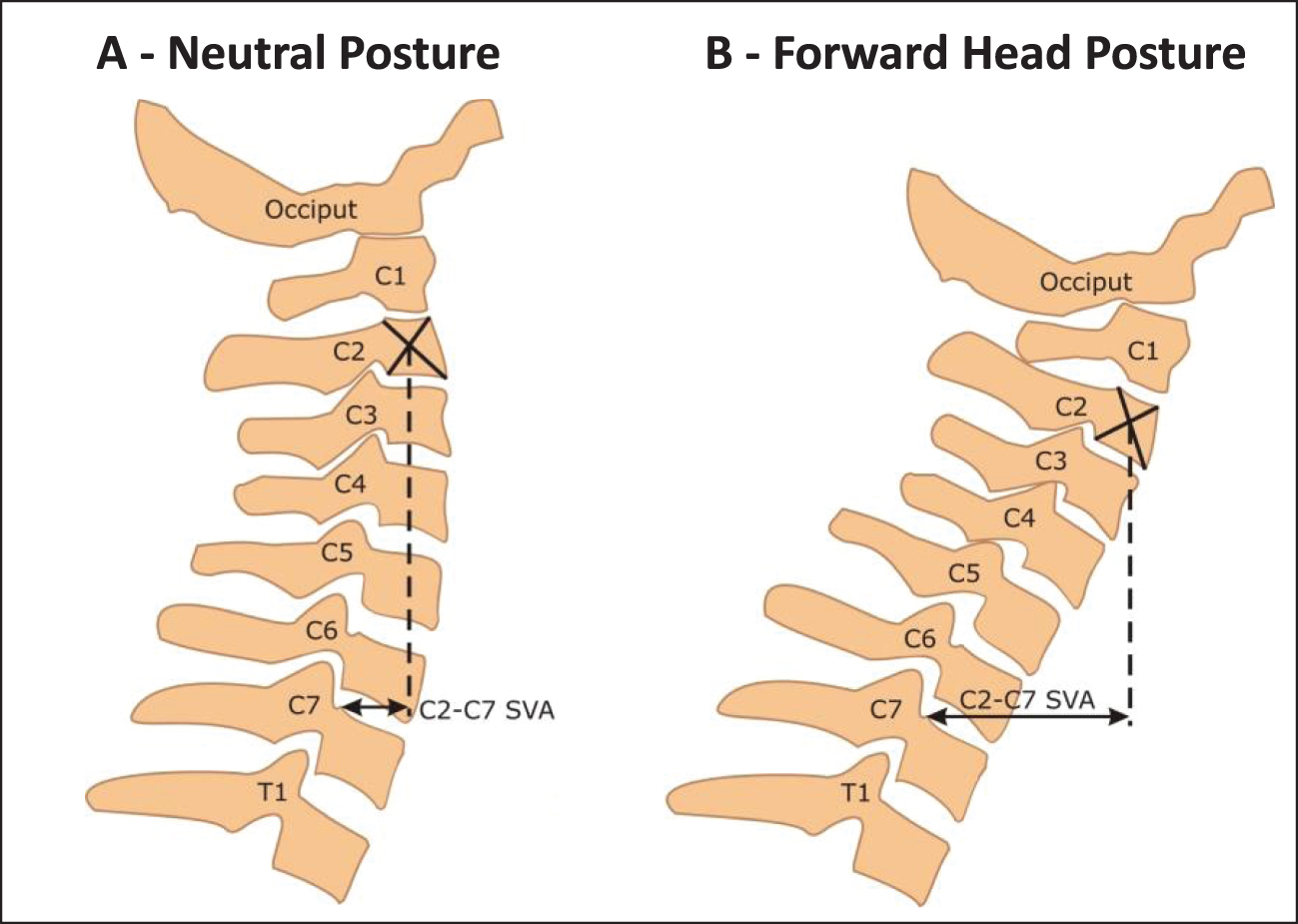

Cervical Spine Muscle-Tendon Unit Length
Differences Between Neutral and Forward
Head Postures: Biomechanical Study
Using Human Cadaveric SpecimensThis section is compiled by Frank M. Painter, D.C.
Send all comments or additions to: Frankp@chiro.org




FROM: Phys Ther. 2017 (Jul 1); 97 (7): 756–766
OPEN ACCESS Saeed Khayatzadeh Olivia A. Kalmanson Dale Schuit Robert M. Havey
Leonard I. Voronov Alexander J. Ghanayem Avinash G. Patwardhan
BACKGROUND: Forward Head Posture (FHP) may be associated with neck pain and poor health-related quality of life. Literature describes only qualitative muscle length changes associated with FHP.
OBJECTIVE: To quantify how muscle-tendon unit lengths are altered when human cadaveric specimens are placed in alignments representing different severities of FHP.
DESIGN: Biomechanical study using 13 fresh-frozen cadaveric cervical spine specimens (Occiput-T1, 54±15yrs).
METHODS: Specimens' postural changes simulating increasing FHP severity while maintaining horizontal gaze were assessed. Specimen-specific anatomic models derived from CT-based anatomic data were combined with postural data and specimen-specific anatomy of muscle attachment points to estimate the muscle length changes associated with FHP.
RESULTS: FHP was associated with flexion of the mid-lower cervical spine and extension of the upper cervical (sub-occipital) spine. Muscles that insert on the cervical spine and function as flexors (termed "cervical flexors") as well as muscles that insert on the cranium and function as extensors ("occipital extensors") shortened in FHP when compared to neutral posture. In contrast, muscles that insert on the cervical spine and function as extensors ("cervical extensors") as well as muscles that insert on the cranium and function as flexors ("occipital flexors") lengthened. The greatest shortening was seen in the Rectus Capitis Posterior Major and Minor muscles crossing the Occiput-C2 segments, which extended to maintain horizontal gaze in FHP. The greatest lengthening was seen in posterior muscles crossing the C4-C6 segments, which exhibited the most flexion.
LIMITATIONS: This cadaver study did not incorporate the biomechanical influence of active musculature.
CONCLUSIONS: This study offers a novel way to quantify postural alignment and muscle length changes associated with FHP. Model predictions are consistent with qualitative descriptions in the literature.
KEYWORDS: Biomechanics; Cervical sagittal malalignment; Cervical spine; Forward head posture; Muscle length change; Muscles

Return to FORWARD HEAD POSTURE
Since 5–14–2017


| Home Page | Visit Our Sponsors | Become a Sponsor |
Please read our DISCLAIMER |
